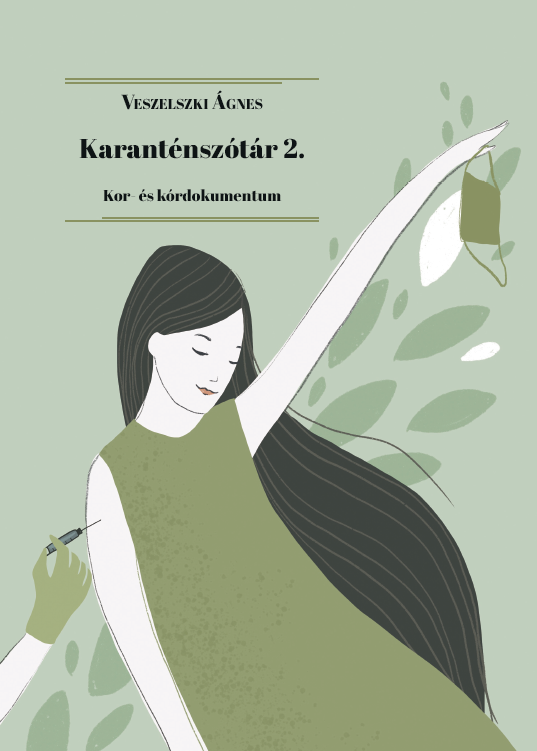Corvinus documents an era and a disease

‘Following the publication of the Quarantine Dictionary: Viral Content in July 2020, I immediately started to think about the continuation: collecting more words and publishing an extended second edition’, said the author. The book titled Quarantine Dictionary 2. Documenting an Era and a Disease has been extended threefold, to 1200 entries compared to the 400 entries in the first edition.

From the aspect of dictionary principles, the extended version follows the first edition. The structure (entry, brief colloquial explanation, references within the dictionary, sample sentences) remained unchanged: the author attempted to give colloquial, easy to understand explanations, setting aside technical terms, and in the case of words with multiple meanings, only the meaning related to the virus situation is included in the Quarantine Dictionary.
With the worldwide coronavirus outbreak in late 2019, the quarantine and the complete halt and slowdown in our lives, we found ourselves in a totally new situation, where we had no terms to name the new phenomena that were not covered by the language yet. This language gap may explain the dramatic surge in the creation of new words.
Because of the medical relations of the topic, a large number of medical terms have become parts of our every-day vocabulary (probably on a temporary basis). The dictionary contains vocabulary items taken from various stylistic layers and language variants: from the colloquial, slang-like, often playful words, through inventions in journalism, to medical terms used every day because of the virus infection and to the terms of office language.

The development of vaccines and the vaccination campaign have brought enormous changes in the management of the epidemic. As a result, we saw the emergence of ‘alternative medicines’ that placed themselves in opposition to the official rules and recommendations: the views – often conspiracy theories – of virus deniers, mask deniers and anti-waxxers. These topics dominate the vocabulary of the new edition.
In addition to the playful and humorous styles of the colloquial expressions, the appropriate drawings by Panni Cikkely graphic artist, as well as her Quarantine Fairy on the cover page all ease the tension generated by the fear of infection and claustrophobia.
Following the words of welcome by Judit Juhász president, Miklós Blankó asked the author and Pál Győrfi, the spokesman of the National Ambulance Service about the linguistic and communication impacts of the coronavirus epidemic. The well-known sentence of ‘Stay at home’ with the typical intonation was heard, and its advanced versions in memes were also discussed, and the guests talked about the explanations of various interesting words and the communication solutions in epidemic management, as well as the awareness raising commitments of the ambulance service, too. Ágnes Veszelszki author and the Association of the Preservation of the Hungarian Language as Mother Tongue that published the book handed over the continuation of the Quarantine Dictionary with the unusual hope that as the coronavirus epidemic subsides, it will not be necessary (and possible) to produce a third edition.